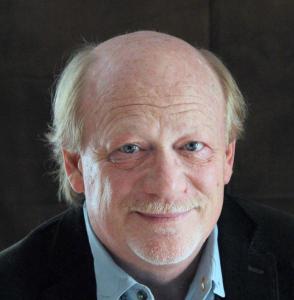
Thomas E. Schindler, PhD—A Hidden Legacy: The Life and Work of Esther Zimmer Lederberg
THE LIFE AND WORK OF ESTHER ZIMMER LEDERBERG
Thomas E. Schindler, PhD
Oxford University Press, August 31, 2021, $34.95
ISBN-10: 0197531679, ISBN 13: 9780197531679
Schindler reports:
Eight years ago, while taking a review course in molecular biology, I heard the story of how microbiologist Esther Lederberg invented Replica Plating by repurposing her compact makeup sponge as a kind of bacterial ink-stamp. Instantly obsessed with her life and work, I quit the course to find out more about this creative scientist. I soon realized that the fame of her brilliant husband, Joshua Lederberg, had obscured her seminal achievements.
Esther Lederberg’s hidden legacy is a classic example of the Matilda Effect, the systemic bias against giving due credit for achievements of women scientists, whose work is misattributed to their male colleagues. Lederberg’s husband and collaborator Joshua Lederberg, along with her mentors George Beadle and Edward Tatum won the Nobel Prize in 1958. Esther Lederberg’s achievements were ignored.
In 2013, I had just retired from my job as a research microbiologist and teacher. I enrolled in the John Hopkins University graduate program in science writing, where I learned how to develop a narrative that revealed the hidden career and life of Esther Lederberg.After years of research and interviews with extant colleagues, relatives and friends, I started the long process of writing and revising the book proposal. But no trade publishers or agents were interested. The Gotham Writers Workshop offered some courses that were particularly helpful and encouraging, inspiring me to withstand repeated rejections. I recommend its “One-on-one Book Proposal Doctoring” and Website Creation courses. Biographers International Organization offers writing consultants who are established biographers. Anne Boyd Rioux helped me develop the narrative arc and integrate the final chapter of my book.
Throughout the eight-year project, I had written “fan letters” to established authors that I quoted in my book. This was an easy and effective way to connect with writers who were familiar with my subject. A significant milestone in the journey to publication was the 2018 NASW conference. At one session, I dared to introduce myself to the speaker, David Quammen. He acknowledged the importance of Esther Lederberg’s contributions to the discovery of bacterial sex and the timeliness of her biography. Quammen encouraged me to pursue academic publishers.
A year later, Oxford University Press offered me a contract. I am happy with OUP: the editing was high quality, and I expect OUP will help publicize my book.
Contact info:
- Thomas E. Schindler, Ph.D., 860-318-6332, tschindler.phd@gmail.com, https://bacterialsex.com/
- Book: https://global.oup.com/academic/product/a-hidden-legacy-9780197531679
- Publicist: Christina Fleischer, 212-726-6251, science.books@oup.com
NASW members: will your book be published soon? Promote it by submitting your report for Advance Copy.
Tell your fellow NASW members how you came up with the idea for your book, developed a proposal, found an agent and publisher, funded and conducted research, and put the book together. Include what you wish you had known before you began working on your book, or had done differently.
See https://www.nasw.org/advance-copy-submission-guidelines.
View Advance Copy archives at https://www.nasw.org/member-article/advance-copy.
Thinking of writing a book? If you are a NASW member, you may access a list of more than 200 books and online resources to help you craft your book proposal, find an agent and funding sources, negotiate your contract, learn about self-publishing, publicize and market your book, and more at https://www.nasw.org/article/write-book.
Send book info and questions about book publishing to Lynne Lamberg, NASW book editor, llamberg@nasw.org.
Follow @LynneLamberg on Twitter for news about science/medical books and writing.
Advance Copy
The path from idea to book may take myriad routes. The Advance Copy column, started in 2000 by NASW volunteer book editor Lynne Lamberg, features NASW authors telling the stories behind their books. Authors are asked to report how they got their idea, honed it into a proposal, found an agent and a publisher, funded and conducted their research, and organized their writing process. They also are asked to share what they wish they’d known when they started or would do differently next time, and what advice they can offer aspiring authors. Lamberg edits the authors’ answers to produce the Advance Copy reports.
NASW members: Will your book be published soon? Visit www.nasw.org/advance-copy-submission-guidelines for information on submitting your report.
Publication of NASW author reports in Advance Copy does not constitute NASW's endorsement of any publication or the ideas, values, or material contained within or espoused by authors or their books. We hope this column stimulates productive discussions on important topics now and in the future as both science and societies progress. We welcome your discussion in the comments section below.





